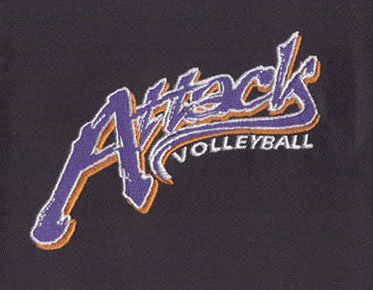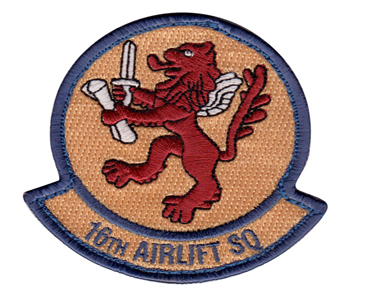How To Transfer Designs And Create Artwork For Embroidery Digitizing
Embroiderydigitizing is one of the
most advanced techniques, which allows designers to create unlimited variations
of designs. Distinct from hand embroidery, where designs are created with
fabric threads, digitized embroidery saves time and effort as it doesn’t
involve stitching or using needles. It is executed using computerized
embroidery machines that place threads on the fabric in accordance with a file
simulation of the original design provided by a designer.
Digitizing
Steps
The
embroidery process can be divided into the following five general steps:
1.The
first step in this process is to upload artwork or patterns to digital
software. Most machines are compatible with their own software brands.
2.The
uploaded artwork has been customized before being punched into a real design.
3.Before
considering other variables, the embroiderer selects from a range of stitch
types available. The stitch direction is also managed
4.The
color of the pattern line has been determined.
5.Machine
threading design
So far,
with the pace of technological progress, the embroiderer has a series of
possibilities. There are many options where you can try to combine machines and
software applications. We will now look at the different functions surrounding
digital embroidery and a range of possible options that allow the embroiderer
to shape the fabric in the following ways:
Independent
lace (FSL) method
In FSL
technology, the object is made entirely of thread sewn on the machine, similar
to lace. This threading technique allows the embroiderer to get more creative
through a large number of options he can try.
Initially,
digitizers attempted to build profiles specifically for a separate place. It is
recommended to use water-soluble stabilizer when making self-supporting lace,
because it is impossible for the machine to make it in mid air. After the
stitching design, you can dissolve the stabilizer, and you will only have
independent lace.
This
method is very easy to manage, because its standardized process will also
produce perfect works of art. However, in order to make it successful, the
technology takes into account many factors.
Shadow
work
This
unique technology focuses on slightly opaque but thin fabrics. Stitching is not
done on the front of the fabric, but on the back to create a shadow effect. Using
embroidery digitization in this technique will only expand the number of
results and patterns you can create.
In order
to select the fabric matching your process plan, you can put your hand on the
back of the fabric and observe whether there is visible shadow on the front.
The most popular fabrics used for shadow works include lawn, plain muslin,
organza, barry and georgette.
Carver
The
carving embroidery scheme is simple surface needlework, involving stitching
round or oval eyelets. This technology adopts two main suture technologies;
Running and buttonhole stitching. First of all, the carving mainly uses the
thread matching the fabric color. If you plan to carve, you'd better use hard
fabric.
Redwork
This is
basically the sewing work done on white or natural color fabrics through red
thread. The stitch types commonly used in this technology are surface stitch
and cross stitch. These works can also be completed through the blue line, but
they are no longer called "Redwork". In a word, the color of lines
may be different, but the same mechanism is used; The monochrome splicing on
the white background was originally based on the idea of application in redwork
The
concept of red works has existed since the 1800s. It is believed that it
originated from the idea that rural women use red lines to decorate their homes
and decorations. Due to the introduction of extensive application of technology
and information technology, red or any other line can be used for more complex
and exquisite works of art.
3D embroidery
A little
disclaimer, the process of 3D embroidery is similar to the standard method, but
the difference is that the pattern is set using an embroidery file with the
extension ". dst". This extension is used to import drawings from
digital software into the machine.
The second
major difference between standard embroidery and 3D embroidery is that the foam
material will unfold on the fabric surface before sewing the thread. This helps
improve the design and provides more visibility, just like custom patches.
You can
use this method on many types of clothing, such as jackets, hoodies, and
sweatshirts. In terms of visual aids, it is also considered a suitable
alternative to applique embroidery patch patch or logo embroidery.
Embroidery
File Type
Computers
and machines have comparative and complex reading abilities. In short, the
files stored in the computer system are not directly readable by the machine.
This indicates that the embroiderer needs to convert the design or artwork
stored in the computer into a specific digital file extension, so that the
machine can clearly understand and formulate the path of the needle. In most
cases, many machines have their own built-in software, which helps to translate
the splicing instructions of files more easily.
Although
these machines can read every file that the computer can read, the embroiderer
must still digitize the design, logo, or artwork in a specific structure that
the machine can understand. Artwork is converted into specialized files, each
of which is machine specific.
File
format
. tap is a
special embroidery file extension for Happy commercial computer.
. dsb is a
special embroidery file extension for Barudan commercial machines.
. exp is a
special embroidery file extension for Melco commercial computer.
Important
aspects of embroidery digitalization
Fish scale
pattern
Bottom
Stitch This is a special stitch procedure designed to hold the fabric to the
bottom. They also position the fabric's fibers so that the top firmly
establishes the main design. This example is common in sleeve patches or
stylish embroidered baseball caps.
compass
course
The needle
path is determined by the person responsible for digitizing the design. The
stitch path determines where the needle starts and ends sewing. In addition, it
determines the order in which each design is put on the fabric.
Stitch
type
This is
one of the most creative parts in the threading process. The digitizer selects
from a series of stitching patterns, the most common of which is
Running
needle; Represents the continuous mode of a thread. It is mainly used to design
thin borders and text, or any small design deemed appropriate.
Satin
stitch; It is mainly used for complex details and borders, which are more
common in text.
Filling
stitch; They have many variations. They are used as files covering large areas
of design, but can also be used to make different patterns.
Skip
stitch
One of the
major problems facing the embroidery industry is that jump stitches are extra
lines or tails that you may see in patterns or designs. This makes it necessary
to locate and trim all skipped stitches, and may make the process very tedious
and tiring.
Number of
threads/stitches
The number
of stitches refers to the number of stitches required to create the entire
pattern. The simple rule is that the more detailed the logo or specific
pattern, the more stitches. This is why the number of stitches varies according
to the structure and details of the pattern.


